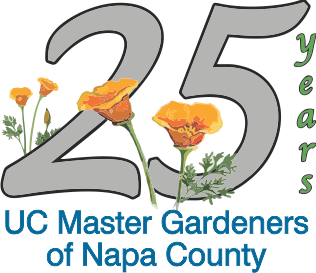by Melody Kendall

He responded that tapping the tomatoes regularly during the heat of the day has increased his tomato production noticeably. His argument was very compelling.

In my friend's case, the garden area is very enclosed and the air movement is minimal. His method using the stick fulfills the job of the wind. For those of us with larger planting beds for our tomatoes the lack of air movement might not be a problem, but it would be a fun experiment to shake half of the tomato plants regularly, leaving the rest alone and comparing the results of the fruit production. It would be fun to shake the tomato plants and mystify the neighbors.
If you try this method of tomato fertilization, send your results to the blog's comment section.
References:
South Dakota State University https://extension.sdstate.edu/pollinating-tomatoes-high-tunnels
University of Florida https://edis.ifas.ufl.edu/hs1248
Louisiana State University https://journals.ashs.org/hortsci/downloadpdf/journals/hortsci/34/5/article-p846.xml
Organic Gardener Publication: Australian author Penny Woodward (Science degree in Biology and Zoology)
https://www.organicgardener.com.au/blogs/doing-tomato-shake
Youtube
https://www.youtube.com/watch?v=-GzwVxqFfYQ
https://www.youtube.com/watch?v=Y6VSNNl6Z_c&t=0
Master Gardeners are following recommended social distancing guidelines that keep everyone safe, Napa Master Gardeners are available to answer garden questions by email: mastergardeners@countyofnapa.org. or phone at 707-253-4143. Volunteers will get back to you after they research answers to your questions.
Visit our website: napamg.ucanr.edu to find answers to all of your horticultural questions.
Photo credits: Pxfuel